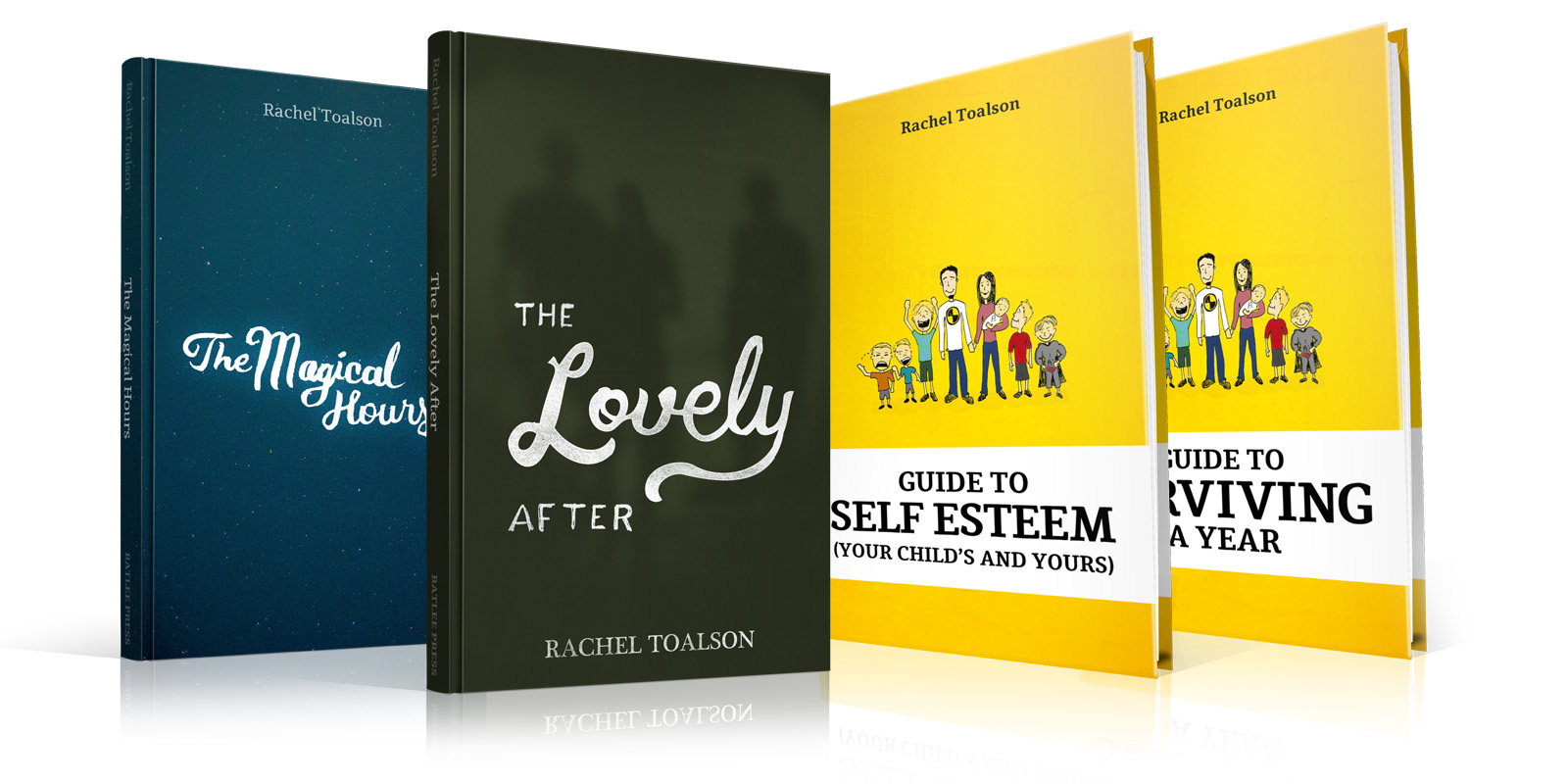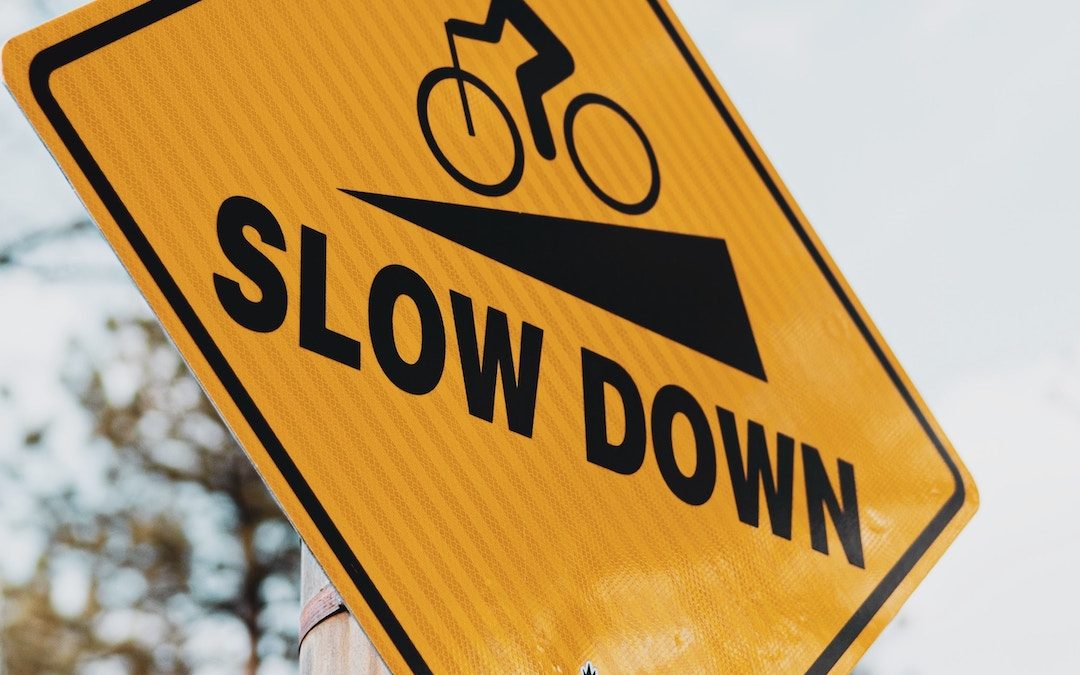
by Rachel Toalson | Wing Chair Musings
Schwipp schwipp schwipp schwipp schwipp bang!
That seems to be all I hear in the early mornings anymore. Either that or talk about solving times, brands of cubes, or Max Park’s new 3x3x3 record of 3.13 seconds.
I have a son who is currently obsessed with Rubik’s cubes and becoming a speed cuber.
He’s had a lot of obsessions over the years, some that stuck around, some that didn’t. He’s a talented kid. His biggest challenge will probably be deciding which thing to focus on, instead of all the things.
I’ve been thinking about him a lot—not just because he’s usually already sitting at the kitchen table solving Rubik’s cubes when I get back from my morning runs (and he’s a teenager; aren’t teenagers supposed to sleep the days away during the summer?). But also because I sometimes find myself thinking, If he spent as much time studying and practicing music and acting—which he says he wants to do as a career—as he does on Rubik’s cubes, he’d pull way ahead of the rest.
But that’s not my decision. I’m not him. I’m just a parent. Who am I to say whether the direction he’s heading is the right one or the wrong one?
And this obsession with Rubik’s cubes is teaching him something valuable—that it takes time to get where you want to be.
Most of us want to get somewhere fast. We have our dreams and we have our plans and we want them to be in our hands already!
But the world has its own timetable.
There are few careers better at proving this than a writing career.
It’s a career of slow. A career of waiting. We become professional waiters—and not the kind who get tips.
Everything about it takes such a long time. Finishing the first draft of a book. Finishing the eighth or twelfth or the nineteen other drafts of that same book before I let it out of my hands. Finding an agent. Finding an editor. Actually publishing a book.
So…slow.
I often find myself thinking, I need something to happen. I need this contract to come through, this character to tell me what in the world she has in mind, someone to return my email.
As Mo Willems once titled one of my favorite Elephant & Piggie books: “Waiting Is Not Easy.”
There’s a well known piece of advice in the running world: Run slow to run fast. It reminds me of something I recently read from Simon Sinek, a British American writer and speaker: “It’s better to go slow in the right direction than go fast in the wrong direction.”
Sinek doesn’t say anything about it being easier to go slow in the right direction, only that it’s better. (Did you notice that, too?)
And on my good days, I believe it is.
Because if I run fast every single day I go out for a run, my body will exist in depletion mode. My energy levels will fall to practically nonexistent. I will burn out as quickly as a firework. And I’ll risk injury, too.
What going slow does is it allows us time and opportunity to prepare ourselves for what’s waiting for us farther along that journey. When I run slow to run fast, I’m building the proper muscles and lung capacity and cadence to run my race. So when I stand at the starting line and the gun goes off, I’m ready to give it my all.
We have to put in the work. And we definitely have to move in the right direction, not the wrong direction—however slow our progress may be.
Now, I know some people have fast passes to the top. And they do just fine. And we may look at that and think it’s not fair. And it’s not. But it’s also not our journey. It may never be our journey. We may never make it to the top—whatever the top may be (because it’s never a literal top, at least not for me. It’s more like, bestseller, awards, beloved by all…).
“What will you do if you never make a bestseller list?” my husband asks me. “Or you never win the Newbery award?” (That’s been my dream since I was 11 and I read every Newbery winner since the award was established. Someday I’ll write one of these books, I said to myself.)
He wasn’t done. “What if you never get any more well known than you are today?”
I cringe just writing those questions down. Because my first thought is, I’ll keep trying, then. And my second thought is, Will I?
If ten years pass and nothing changes, will I?
If twenty years pass and nothing changes, will I?
If thirty years…will I?
Go slow in the right direction…
But how slow are we talking about?
Preparation, I remind myself. It’s all preparation. And without preparation, we won’t last very long in the game. We may not be completely ready. We might be thrown into something completely unknown.
I’m not saying preparation can protect us from every unknown. Of course not. Life is hardly ever predictable. But preparation can help us plan for some unknowns. A second pair of shoes on race day, in case the first ones randomly split. An extra journal tucked into a travel bag because you just never know how this event will affect you, and journaling helps you decompress. An absorbing book to read while you’re sitting on a plane, because your anxiety really likes playing Worst Case Scenarios on planes, and usually your partner’s here to distract you but today you’re flying solo.
So I suppose the question could become: Do we want to be a blip on the timeline? Forgotten faster than we rose to the top? Here today, gone tomorrow? Or do we want to be around as long as we possibly can be?
Going slow in the right direction instead of fast in the wrong means we have a choice to make. Sure, the dream may be slow coming to us, but does that mean we should turn our backs on it? Do something else? Go in another direction that promises a faster return?
I’ve never loved doing anything as much as I enjoy writing. So my answer is no. I hold fast to the dream. And it may not ever come, but I know I’ve been walking in the right direction.
No regrets, no matter how slow. I’ll give it my best. I won’t throw away my shot (why, yes, I did just see Hamilton on the stage)!
I hope we can all say the same.
Have a glorious month of moving slow in the right direction.
Here are some of my favorite things to do while I’m going slow in the right direction (and waiting):
1. Study and learn
I’ve always loved learning, so one of my favorite things to do while in a waiting (or just a slow-moving period)—besides getting started on the next thing—is to study and learn. Sometimes that’s studying and learning more about writing, focusing on some of the places that feel more challenging for me so I can develop my skills. Sometimes it’s learning more about something I’m interested in—like environmentalism or feminism. I read everything I can get my hands on. For pleasure and for study.
2. Grow
Practicing consistently helps us use our skills both newly learned and ones we’ve cultivated for ages. Putting in the work is one of the best things we can do while we’re going slow in the right direction.
But you know what? So is resting. We grow both by practicing and by taking time off and resting. We take time off, and we grow. It’s biologically proven. Kids grow in their sleep. My body repairs itself from my long runs while I sleep. Our minds repair themselves with rest.
Do crafts. Take walks. Watch TV shows or unplug with a book. Do what makes you feel joyful and alive.
3. Invest in others
Going slow also allows us ample time to invest in others, whether that’s our own children or our partners or coworkers or people we barely know but who would love to be where we are. We can be generous with our time or our knowledge or our support. And giving back is yet another way to go slow in the right direction. Investing in the next generation will have profound impacts, and I want to be part of that. Don’t you?
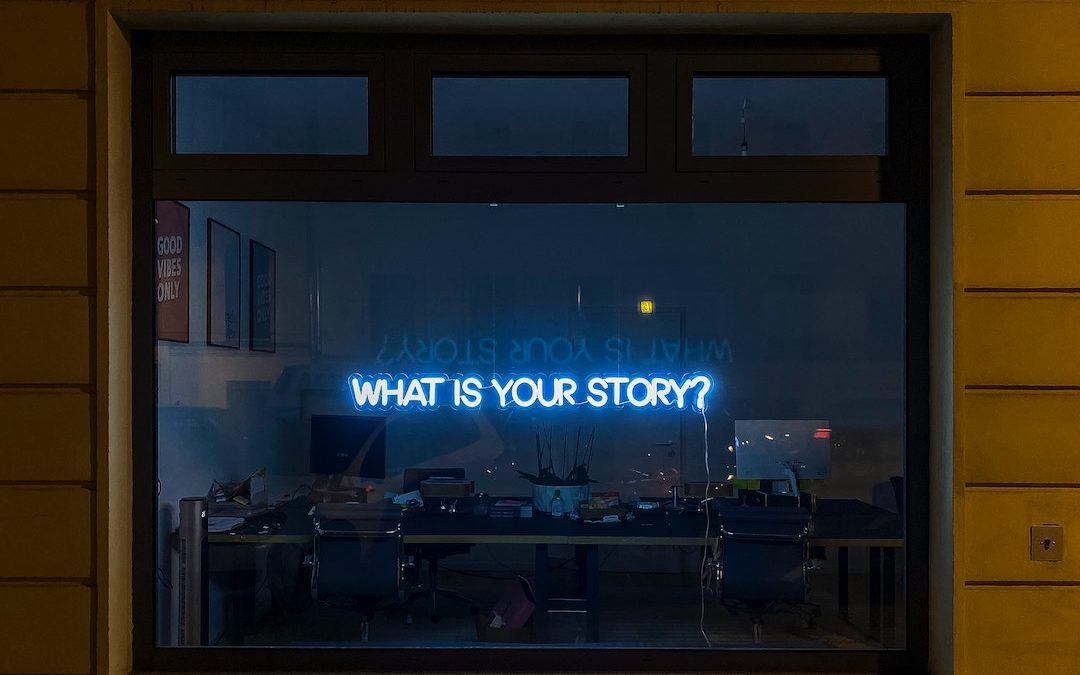
by Rachel Toalson | This Writer Life
Part of collecting ideas includes not just searching outside yourself but also searching inside.
I suppose this could also be a step in the process of developing ideas.
We all have unique experiences and backgrounds that have shaped us into unique people. Why wouldn’t we delve into that history to pull out some ideas for stories and content? Writers are, after all, told to write what we know. So our lives and memories are a treasure trove of ideas.
Here’s how we can unlock and open up that treasure trove.
1. Start by remembering.
I acknowledge that some events in our pasts might be unexplored indefinitely (and intentionally) because they cause us pain and heartache. It’s okay to figuratively block those off until you’re ready to approach them—if ever you are.
But we also likely have all kinds of memories that aren’t painful—disappointing, maybe, or a little bit scary or really, really happy—whether those memories are things we did with other people, learning experiences, trips and vacations, big events like graduations and sports games and band concerts or competitions. Start with these. Think about the things you remember. Are there any memories that contain the seed of a story idea, something you could build a character around or a place you went once upon a time that would make a perfect setting for a murder mystery or a romantic meet cute or a creepy location for a horror scene?
Memories hold all kinds of potential for story ideas. I’d suggest making a list of the big ones and seeing if that opens up some of the smaller ones—and then mining them in turn for any kind of creative writing you might do.
2. Consider the things that are most important to you.
Make a list of the things you care about. Family, maintaining healthy friendships, kids owning their power and remembering they’re magnificent. Environmentalism. Integrity and honesty. Writing. Running. Being fit in general. Music. Books. Gender equality. Equality in general. Climate change. Social justice. Homelessness. There are so many more things I care deeply about. I’m sure there are many things you care deeply about, too.
How can these places of deep care help you come up with story ideas? Well, they could be themes. Or characters who have expertise in one of your areas of interest (because it’s fun learning more about the things we care about!). Or they could frame a whole story.
I’ve written books about musicians, kid environmentalists, runners (lots of these), characters who are writers and journalists, books focused around media literacy and gender equality. When we care deeply about something, it’s worthwhile to put it in a story or composition—because the care comes through onto the page. And sometimes it’s contagious.
3. Collect your daily life in journals.
I know. Here I go again, talking about journaling. You might be tired of hearing me try to convince you to journal, but this is yet another reason to do it—you can get writing ideas from it!
When I was writing for Huff Post and Babble, I often used journal entries as a springboard for my humorous parenting essays—because those early parenting years I collected all kinds of funny, maddening, overwhelming, joyous moments in my journals. It made coming up with new essay ideas practically simple.
These days I’ve used my journal entries for essays, fiction, memoir, and even poetry ideas—in fact, when I find myself bereft of ideas, I’ll pick a journal at random from my shelf and start reading at the beginning or in the middle. Some seasons I’ve been so obsessed with quality of sleep that I’m developing a humorous character who stresses endlessly about sleep.
Give it a try. You might be surprised how many ideas follow just putting a pen to the page.
I hope these tips have been helpful for you; I’d love to know how you use yourself or your experiences to generate writing ideas.
Have a fantastic month of generating ideas and writing!
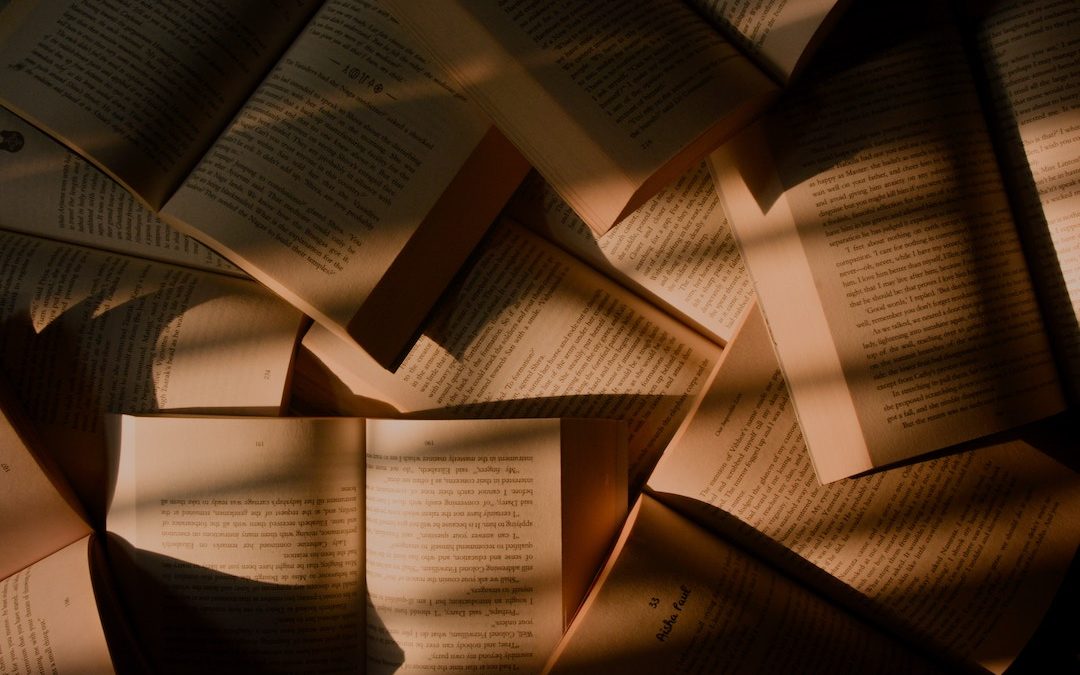
by Rachel Toalson | Books
Here are five things worth sharing this week:
1. Reading: I recently finished Freewater, by Amina Luqman-Dawson, a historical middle grade novel about a boy, his sister, and the free community they find after running away from Southerland Plantation, where they work as slaves. It was inspiring, illuminating, and important. The book, which is Amina Luqman-Dawson’s debut, won the Newbery Award for 2023. Highly recommended!
2. Reading: My kids read Ban This Book, by Alan Gratz, first and told me I just had to read it. Boy, was I glad I did. Though published in 2017, the book has real-world applications today. It explores book banning in an easy-to-understand way for readers ages 8-12, and it featured one of my favorite elements: kids owning their power. I’d say it’s a book for everyone. (Gratz, by the way, is best known for his historical middle grade novels, Refugee , Allies , and Projekt 1065 .)
3. Reading: I’m currently in the middle of the middle grade graphic novel Friends series, by Shannon Hale. So far I’ve read Best Friends and Friends Forever , and I have to say: they’re fantastic! They provide a real-life look at friendship dynamics among girls in middle school, and I really enjoyed their honesty. Hale captured the swinging emotions and the constant questions of middle school. I haven’t yet read the first of the trilogy, Real Friends , but if it’s anything like the later two, I’ll love it!
4. Watching: Everybody wants to live longer, right? Well, Chris Hemsworth (you may know him as Thor in all the Marvel movies) has a documentary series on Disney+ about how he’s working to do that: Limitless with Chris Hemsworth . He talks with experts and professionals and provides important information about how we can keep our bodies in working order for longer, examining things like stress, shock, fasting, strength, memory, and acceptance. I’ve watched every episode myself and rewatched every episode except the last one with my kids—so they’re armed with the same information I have. It’s an illuminating series that will leave you feeling inspired and determined.
5. Reading: “No surprise. Idiots make it into every company. They tend to interview well.” If you’re looking for a delightful adult fiction read, look no farther than Bonnie Garmus’s Lessons in Chemistry. Oh my goodness. This book had me laughing so hard. It features Elizabeth Zott, a chemist in the 1960s— when women weren’t chemists or accepted as anything more than housewives. She becomes the unintentional star of America’s most popular cooking show. I could not get enough of Elizabeth Zott—and the good news is, she’ll be on the big screen soon, with a series produced by Apple TV. But make sure you read the book before you watch the series!
If you want to go deeper into some of these books, be sure to check out my YouTube show, On My Shelf.
Link: https://www.youtube.com/playlist?list=PLtmdj4SXf2Csy5uu6WEyLDtYlvg9t1FqE
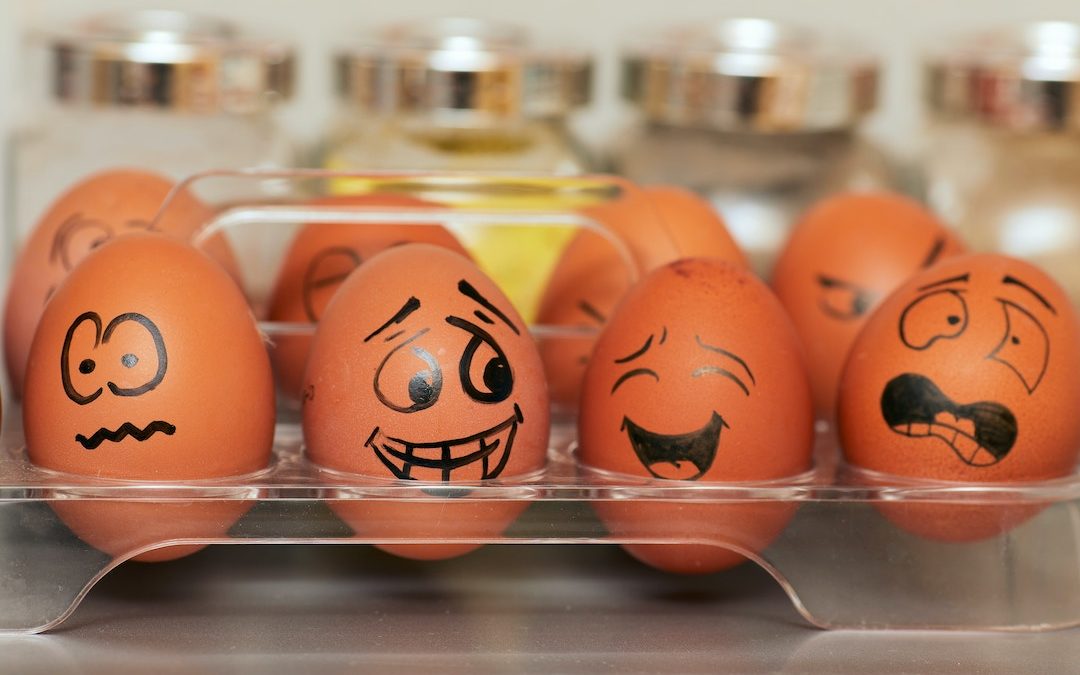
by Rachel Toalson | Wing Chair Musings
On my journey to becoming a novelist, I spent a large chunk of time writing humor essays on parenting for online publications like Huff Post, Yahoo Parenting, and Babble. I loved writing those essays and continued doing so even after Babble disappeared, Yahoo Parenting lost its appeal, and Huff Post morphed into something a little different.
Part of the reason my parenting experiences drew me to humor was that my day-to-day life as a mom of six young kids was ridiculous and overwhelming and sometimes I wasn’t sure I’d make it through the day—whatever “making it” even meant. I was so dangerously close to tears that I wrote my reality into something hilarious.
From the outside looking in, it was hilarious.
Those humor essays, I believe, saved me during that time in my life. They saved me from being completely overcome by the overwhelm. They saved me from curling up in my bed and staying there. They saved me from giving in to the undertow of postpartum depression and paranoia.
That’s the magic of humor for me.
I remember surviving a forty-day stomach plague with a newborn, a one-year-old, and a three-year-old and thinking, One day I’ll laugh about this. How can I laugh now? When I walked into my toddler twins’ bedroom to get them up from their supposed-to-be-sleeping nap and I found they’d painted the walls with what was in their diapers—for the second week in a row!!!—I thought, One day I’ll laugh about this; how can I laugh about it now? When one of my sons took a Sharpie to every shirt he owned while I was organizing his brother’s closet, I reminded myself that one day I would laugh about it—so how could I laugh about it now?
I still do this today.
Humor does something magical to the brain. I don’t have any scientific proof for you today (although it does exist), but I know what it’s done in my own life. It brightens a world-weary day. It strengthens resolve and fortitude in some unexplainable way. It lifts moods and grows hope.
It also eases conflict. One of the fastest ways to diffuse the tension in an argument is to introduce some humor. Marriage counselors suggest that couples use a code word—the funnier, the better—when they’re arguing and emotions are flying a little too hot. (My husband’s and my code word is “crapulous,” an old retired gem that means feeling sick after eating or drinking too much—which is also how you can feel in the middle of an argument.)
When my sons are locked in a disagreement about something outrageously important—like who got more strawberries on their plate for lunch—all someone has to do is fart to blast through the tension. (Juvenile, I know, but it’s effective!)
I don’t write as many humor essays as I used to, because my sons have opinions about whether or not they appear in those essays—even if I’m mostly making fun of myself. But I have started embracing more humor in my fiction.
I have no idea why I waited so long to do it. It’s so much fun.
My latest book, The First Magnificent Summer (which released Tuesday!), is one of those humorous books. It’s not all humorous. It has substance and a hard story at its core, because humor, in my opinion, is best utilized in a story that means something. The hard places are made more digestible with humor. And we remember them, because they make us feel so many different emotions—joy, sorrow, delight, dread, satisfaction.
The difficult emotions coexist with the easy and enjoyable ones. We remember stories that make us feel—especially when there’s laughter involved.
Laughter connects us. Some of my favorite experiences with my family include watching a movie together and hearing our voices joined in laughter. Telling stories that elicit collective laughter around our dinner table. Making each other collapse into giggles because of silly acts or outrageous reactions.
Humor has an important place in our lives. I often tell my children, “If I can teach you to laugh at yourself, you’ll be well prepared for what the world and universe have in store for you.”
There’s no sense in taking ourselves (or the world) so seriously all the time. That’s not to say the world shouldn’t be taken seriously at all. There’s a big difference between at all and all the time. Some things are so ridiculous and unexplainable that all we can do is laugh. Some experiences are so ridiculous and unexplainable all we can do is laugh in response to them.
The old adage “laughter is the best medicine”? It turns out laughter is a kind of medicine. It heals hearts and opens minds, too. It connects us and bolsters us. It can even make us brave.
We could do with a little more laughter in our world.
I hope you have a month filled with giggles, snorts, and laugh-until-you-cry moments.
Here are my best tips for finding more laughter in your life:
1. Embrace the silly.
Especially if you have kids in your life, embracing the silly can increase the laughter in your home. Sometimes it’s as simple as breaking out in a silly dance. Sometimes it’s changing the lyrics to a song to more hilarious alternatives. When my kids pick rhyming picture books for our reading time, my husband likes making up his own word that doesn’t rhyme the stanza but is a synonym for the rhyming word. We get so many laughs out of this I’ve written a rhyming picture book that doesn’t rhyme!
2. Consume funny things.
It could be funny movies or TV shows or it could be humorous books (shared humorous audiobooks are the best). Look for comedy shows in your area, or play funny board games with family and friends. I’ve laughed until I’ve cried playing games like Kids Against Maturity and Poetry for Neanderthals with my kids and husband. Read a joke book or write your own and share it with all the people in your home. Even if they’re Dad-joke quality, kids will still shake their heads and laugh. Even the 16-year-old.
3. Try to turn one experience a week into a funny story.
Whether you write it down or you just tell it to someone, pick an experience from the last week that was annoying or frustrating or maybe even disheartening or mortifying. Try spinning the story in a humorous way. Then challenge yourself to do it again next week. And the week after that. Make it a habit, and see how your outlook shifts.
4. Observe the world.
People (especially kids) are hilarious, and sometimes they aren’t even trying. I visited a school recently, and one of the first questions for the Q&A time was, “How much do you bench press.” Uh…what does that have to do with writing? Nothing! But he was a seventh grade kid who was curious. So I got to tell him that I haven’t bench pressed anything since I was in college, and back then I’d bench pressed 140 pounds before my arms gave out and the guy at the next bench press station had to save me from Death by Benchpress Fail. Wasn’t funny at the time. But it’s funny now (according to every seventh grader in the room—because they love stories that prove adults are fools).
Try your own observations and see what you end up with.

by Rachel Toalson | This Writer Life
Ideas are all around us.
The problem is, sometimes we’re so focused on other things, our eyes fixed on just about everything else, that we miss them.
When I visit schools or I do author panels or interviews, I’m frequently asked where I get my ideas. My answer is usually, “Everywhere.”
Sometimes I’m reading an article in the paper or the latest National Geographic, and an idea knocks on my brain. Sometimes I’m out for a walk, clearing my mind, and suddenly ideas flood me. Sometimes one of my kids makes an observations or says something funny or offers up the magic words, “What if…”
So many ideas come from the words “what if.”
I keep an idea journal ever at the ready, because I can never predict when the next idea will announce itself. Sometimes it’s a book idea, sometimes it’s a marketing strategy, sometimes it’s a way to get my 16-year-old out of bed in the morning. All the ideas go into this journal (which means it’s a bit of mess), no matter how outrageous or seemingly impossible.
It seems silly to say, but I think ideas like being captured and collected. They multiply when they know they have an open mind to land in.
If you have trouble coming up with writing ideas, whether it’s for books or essays or poems or whatever you may be writing, here are some suggestions that might help generate some.
1. Read!
I know this one’s pretty obvious. Most writers know that the more they read, the better writer they’ll be. But I will add something to the advice:
Read widely.
It doesn’t matter if you write kids books or romance or mysteries or nonfiction—read them all. Most of the advice we get as writers is “read in your genre.” But as an eclectic reader who picks up middle grade literary books, young adult fantasies, adult historical fiction, poetry books, biographies about Sylvia Plath and Mark Twain, memoirs, National Geographic, Psychology Today, the local newspaper (really, I read all over the place), I’ve found that the richest ideas come from the most unlikely and unexpected places. Our brains are amazing at stitching together new ideas if we give them all the threads.
2. Take a walk.
This comes with a catch: Don’t take any distractions with you.
Some of my most exciting ideas have come to me when I’ve been out on a walk or run in my neighborhood. For my walks I leave my phone at home. For the runs where I want to generate ideas or think something through, I listen to music. There’s something magical about moving the body while out in nature that stimulates the brain and gets ideas flowing.
If you’re afraid of losing the ideas that may come to you on those walks or runs, take a notepad with you.
3. Cultivate your relationships.
It seems a strange way to generate ideas, but we all have people in our lives with whom we come in contact on a regular basis. And sometimes all it takes is tuning in and listening to the people around us to come up with ideas. I was washing dishes one night during my family’s after-dinner chore time when I turned around to throw away a tea bag and nearly collided with my second son, who was supposed to be sweeping the floor. He was, instead, dancing with a broom and throwing out new I wonders for our “I Wonder Wall.” One of them was, “I wonder what it would be like to live in a home without a roof.”
I now have a middle grade book called The Home Without a Roof, based on my research about and my work with the homeless here in my city.
Of course these aren’t the only ways to generate ideas; there are many more (listening in on conversations, anyone?). But what they all have in common is the importance of keeping your eyes and ears wide open. You never know what brilliant ideas await you just around the corner. Make sure you’re paying attention.
I hope you have a wondrous month full of new and exciting ideas.






